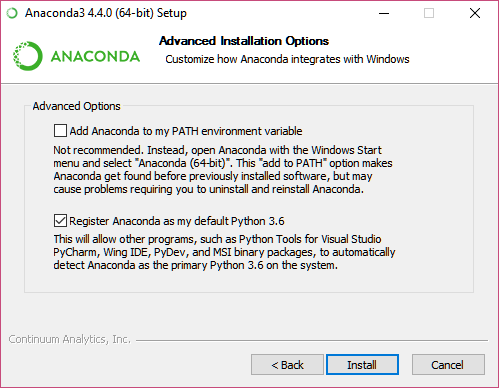


For example, to update your dspyr environment from the screenshot above: conda update -n dspyr -all Or, from the command line, you can provide the environment name (-n envname) or path (-p /path/to/env). When it is selected there is a triangular marker on the right (see image above, step 3). If you have other environments you’d like to update you can repeat the process above, but first click on the environment. This operation will only update the one selected environment (in this case, the root environment). This needs to be executed from the command line, and the best way to get there is from Anaconda Navigator, then the “Environments” tab, then click on the triangle beside the root environment, selecting “Open Terminal”: This will update all packages in the current environment to the latest version-with the small print being that it may use an older version of some packages in order to satisfy dependency constraints (often this won’t be necessary and when it is necessary the package plan solver will do its best to minimize the impact). In most cases what you want to do when you say that you want to update Anaconda is to execute the command: conda update -all Version number and sometimes says custom. Navigator I can see that there are several individual packages thatĬan be updated, but also an anaconda package that sometimes has a I have Anaconda installed on my computer and I’d like to update it. The question was originally asked on StackOverflow. That, one should update just like any other package manager (e.g., a pip or a homebrew).įound the answers in this useful post by Anaconda Keeping Anaconda Up To Dateīelow is a question that gets asked so often that I decided it would be helpful to publish an answer explaining the various ways in which Anaconda can be kept up to date. The one exception to everything above is the conda package, which is the very infrastructure you're using to manage packages and envs. Instead, Conda makes it quite easy to create new envs, and if they have a lot of overlap with other envs, then the envs can be quite light due to sharing packages across envs via hardlinking.
Anaconda update packages code#
Every time you update an env, you risk breaking code that you've already written. Personally, I will rarely run conda update on an env once I've harden the requirements for a project.

Anaconda update packages install#
Instead, just install Miniconda and only install what you want from Conda Forge at the start. However, in my opinion, there's almost no point to installing Anaconda if you're going to switch most packages to Conda Forge anyway. It may be worth noting that people who prioritize having access to the latest versions of packages often seem to prefer Conda Forge, because it tends to have more frequent package releases. If you want the newest individual package releases and don't mind potentially working with package builds that aren't thoroughly tested for integration, then run conda update -all. In between Anaconda releases, new versions of many packages are still released on the Anaconda channel, and if you run conda update -all you're going to inevitably get ahead of the versions specified in the anaconda bundle.

If you want a stable set of packages that have been tested for interoperability, then do conda update anaconda. Because this takes time to do, the Anaconda team only releases new distributions (i.e., a new anaconda version) every couple months or so. Presumably, a bunch of testing goes into verifying that all the package versions and builds are compatible with each other. Update AnacondaĪnaconda is a Python distribution that bundles together a ton of packages. You're not doing anything wrong per se, but it just doesn't make much sense to ever run conda update anaconda and conda update -all right after each other on the same env - they represent two completely different configurations.


 0 kommentar(er)
0 kommentar(er)
